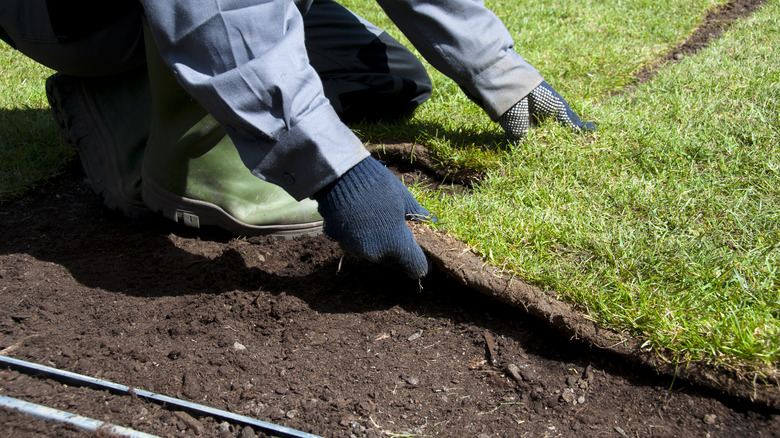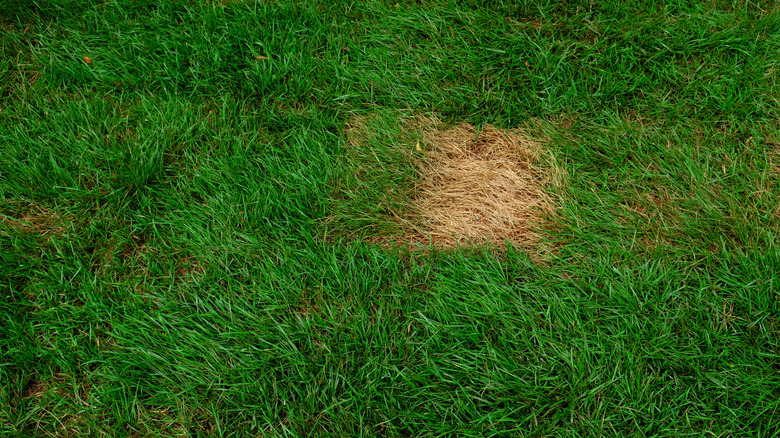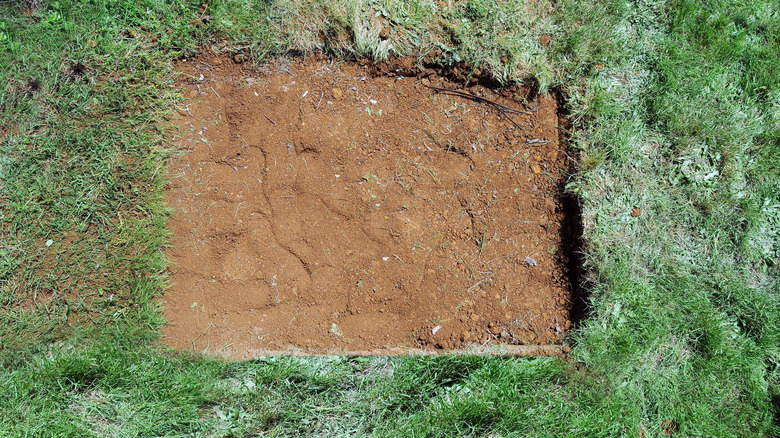Avoid This Big Lawn Care Mistake When Laying Sod
Laying sod is exciting because it means your lawn is about to get a facelift. Rather than having dead, brown patches or sparse muddy areas, you will have a beautiful, uniform lawn that will be the envy of the neighborhood. Or at least, it will be if everything goes well. While laying sod may seem as simple as rolling it out over empty patches of dirt, certain mistakes can hamper its ability to grow, leaving behind the same dead patches you started with. To avoid this outcome, make sure you don't overlap any pieces of sod. Ensure the sod is sitting directly on the dirt rather than having it overlap with any existing grass. Rolling out sod onto existing grass (rather than sowing seeds in the empty patches) is very tricky. Sod grows very shallow roots, so having any sort of obstacle (like an existing layer of grass underneath) will stop the roots from reaching the dirt and kill the sod.
It might seem like a small, insignificant detail. Who cares if two inches of grass are overlapping? But if you want to correctly fill in your lawn patches and win the battle with dead grass, ensure the new sod sits directly on the dirt, flush against the existing grass, and with no overlapping sections. Here is an in-depth look at why it's important and how to avoid killing your sod during this process.
Why you shouldn't overlap sod on existing grass
The biggest issue with letting your sod overlap with existing grass is that you're making it very difficult for its shallow roots to make contact with the dirt. Rather than taking root with the soil, the roots need to stretch past the layer of grass and find space between the blades to reach the dirt. This isn't likely to happen, and the result is a dying patch of sod. It can't reach the nutrients in the soil, and it can't reach any water.
If your sod somehow does survive in the overlapped areas, you won't enjoy the end results. Bumps aren't guaranteed to flatten, which will result in raised, grassy lumps. Your lawn will lack a uniform appearance, and these spots will become trickier to mow since they're not level with the ground. It can also become a tripping hazard. To avoid having to remove the sod and restart the process, be careful not to overlap the sod with the grass when placing it.
How to avoid sod overlap
To properly lay down your sod in dead patches and avoid overlapping, you need to do some prep work. First, make sure the patch is clear of any grass and weeds by either ripping it out by hand or laying a thick sheet of plastic over it. Using plastic to kill your grass can take anywhere from two to three months, so ensure you prepare ahead of time. To make it easier, remove the grass in a square or rectangular shape, so it's easier to fit the new sod in without any overlap.
Once it's dead, remove the grass and the top few inches of soil, and then use a shovel to till the ground underneath to prep it for the fresh sod. To ensure your new grass has access to nutrients, add fresh soil on top of the tilled area, topping it off until it's an inch away from being level with the surrounding dirt. Then, take your new sod, measure the empty square or rectangular patch, and cut it down to size so it fits the patch perfectly. Lay it inside the patch, taking special care that none of the sides overlap. Plan to water it multiple times a day for a few weeks to help it set and take root.



